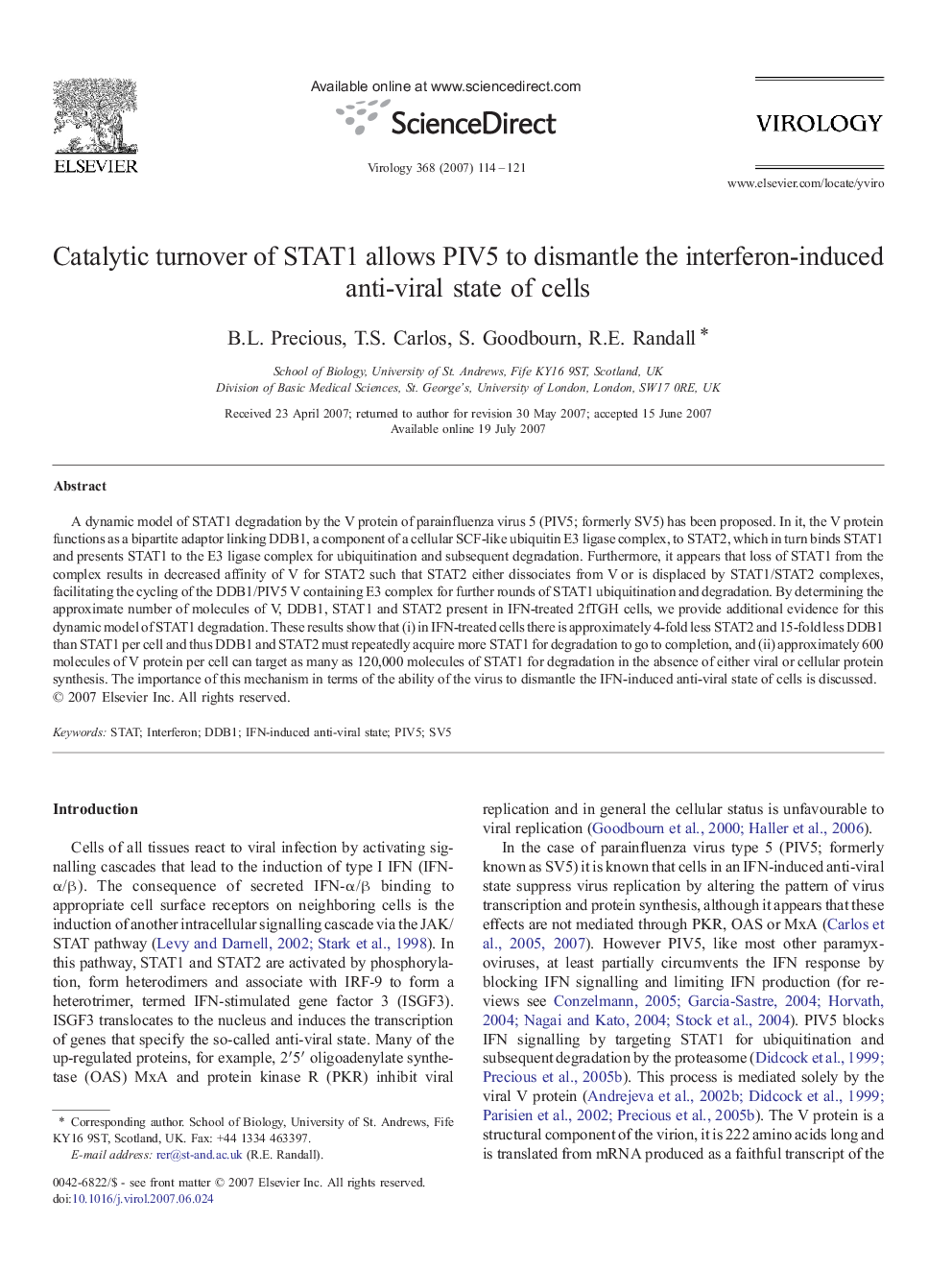| Article ID | Journal | Published Year | Pages | File Type |
|---|---|---|---|---|
| 3426259 | Virology | 2007 | 8 Pages |
A dynamic model of STAT1 degradation by the V protein of parainfluenza virus 5 (PIV5; formerly SV5) has been proposed. In it, the V protein functions as a bipartite adaptor linking DDB1, a component of a cellular SCF-like ubiquitin E3 ligase complex, to STAT2, which in turn binds STAT1 and presents STAT1 to the E3 ligase complex for ubiquitination and subsequent degradation. Furthermore, it appears that loss of STAT1 from the complex results in decreased affinity of V for STAT2 such that STAT2 either dissociates from V or is displaced by STAT1/STAT2 complexes, facilitating the cycling of the DDB1/PIV5 V containing E3 complex for further rounds of STAT1 ubiquitination and degradation. By determining the approximate number of molecules of V, DDB1, STAT1 and STAT2 present in IFN-treated 2fTGH cells, we provide additional evidence for this dynamic model of STAT1 degradation. These results show that (i) in IFN-treated cells there is approximately 4-fold less STAT2 and 15-fold less DDB1 than STAT1 per cell and thus DDB1 and STAT2 must repeatedly acquire more STAT1 for degradation to go to completion, and (ii) approximately 600 molecules of V protein per cell can target as many as 120,000 molecules of STAT1 for degradation in the absence of either viral or cellular protein synthesis. The importance of this mechanism in terms of the ability of the virus to dismantle the IFN-induced anti-viral state of cells is discussed.
